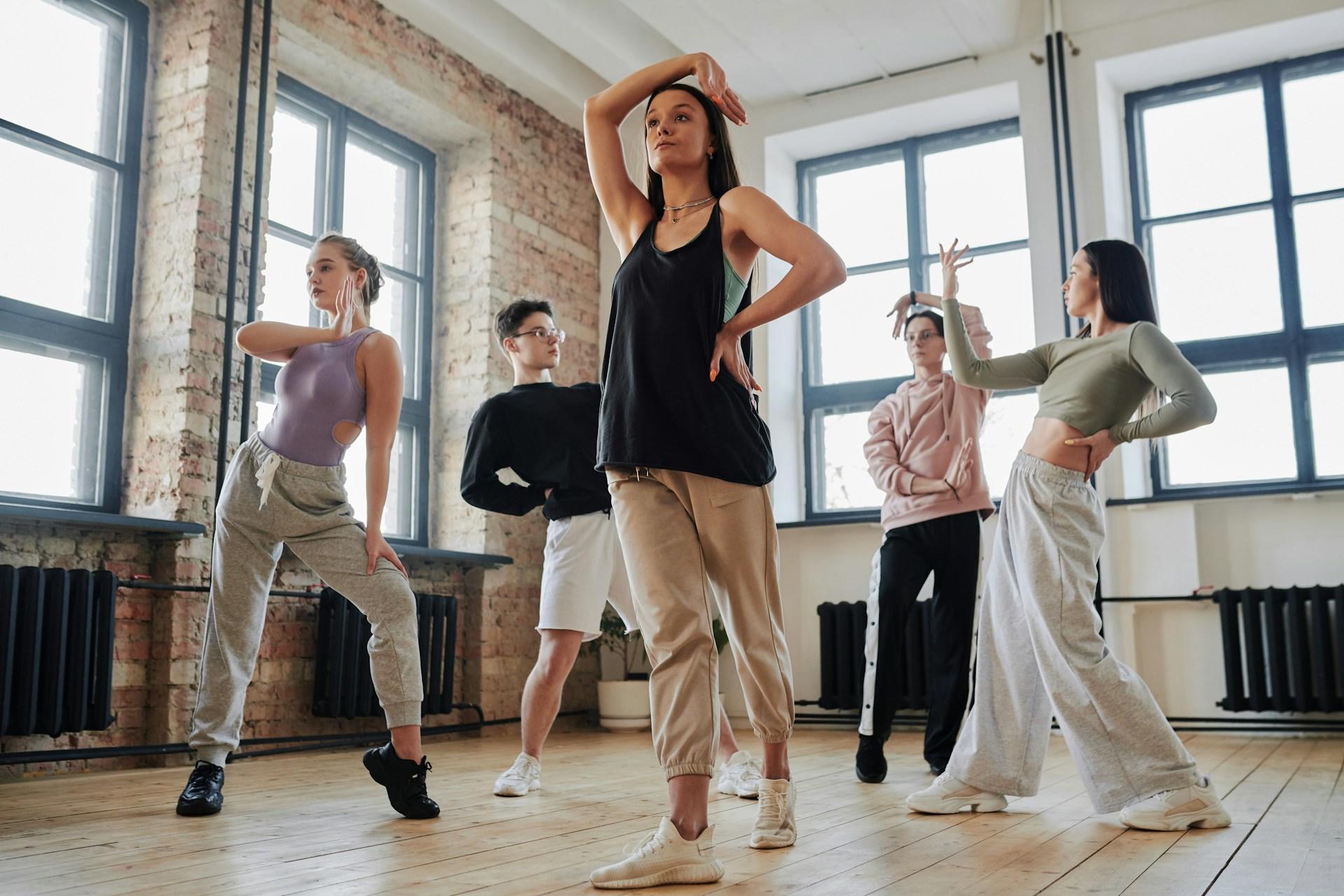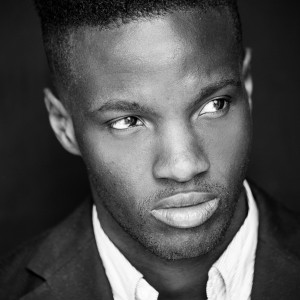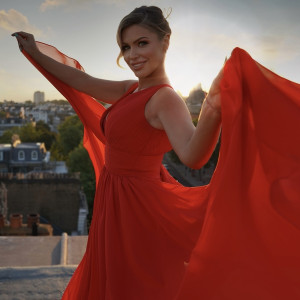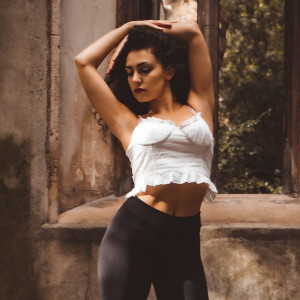It takes an athlete to dance, but an artist to be a dancer.
Shanna LeFleur
That dance coach speaks the truth. Many fitness routines resemble choreographed dances, Zumba, Step Aerobics, and Pilates, among them. Granted, those workouts may be more energetic and repetitive than a dance. Still, the difference lies in how the dancer interprets their moves.
You can be sure that even novice dancers distinguish between their workouts and dance routines. Likewise, you can safely bet that dancers wouldn't dream of taking the stage without first warming up. This chart describes the moves dancers make to get their bodies performance-ready. Keep reading to discover why those moves work the best.
| 💪The move | ⚙What it does | 🔢How many reps? |
|---|---|---|
| Deep breathing | Helps you focus Loads your body with oxygen | 10x each before, in the middle of, and at the end of your warmup |
| Star jumps (jumping jacks) | Raises heart rate, builds coordination | 2 x 20 jumps |
| Lunges | works glutes, knees, and hips warms up lower body | 10x for each leg |
| Heel raises | Conditions hamstrings Warms calves | 10x, both legs together. |
| Hip swings | Warms and conditions the hips. | 10x clockwise and 10x counter-clockwise |
| Leg swings | Builds range of motion in the hips | 10x for each leg |
| Shoulder rolls | Loosens and warms upper back, torso, and shoulder muscles | 10x forward and 10x backwards |
| Neck rolls | Stretches neck muscles | 10x to the left and 10x to the right |

Breathing: the Best Warm-up
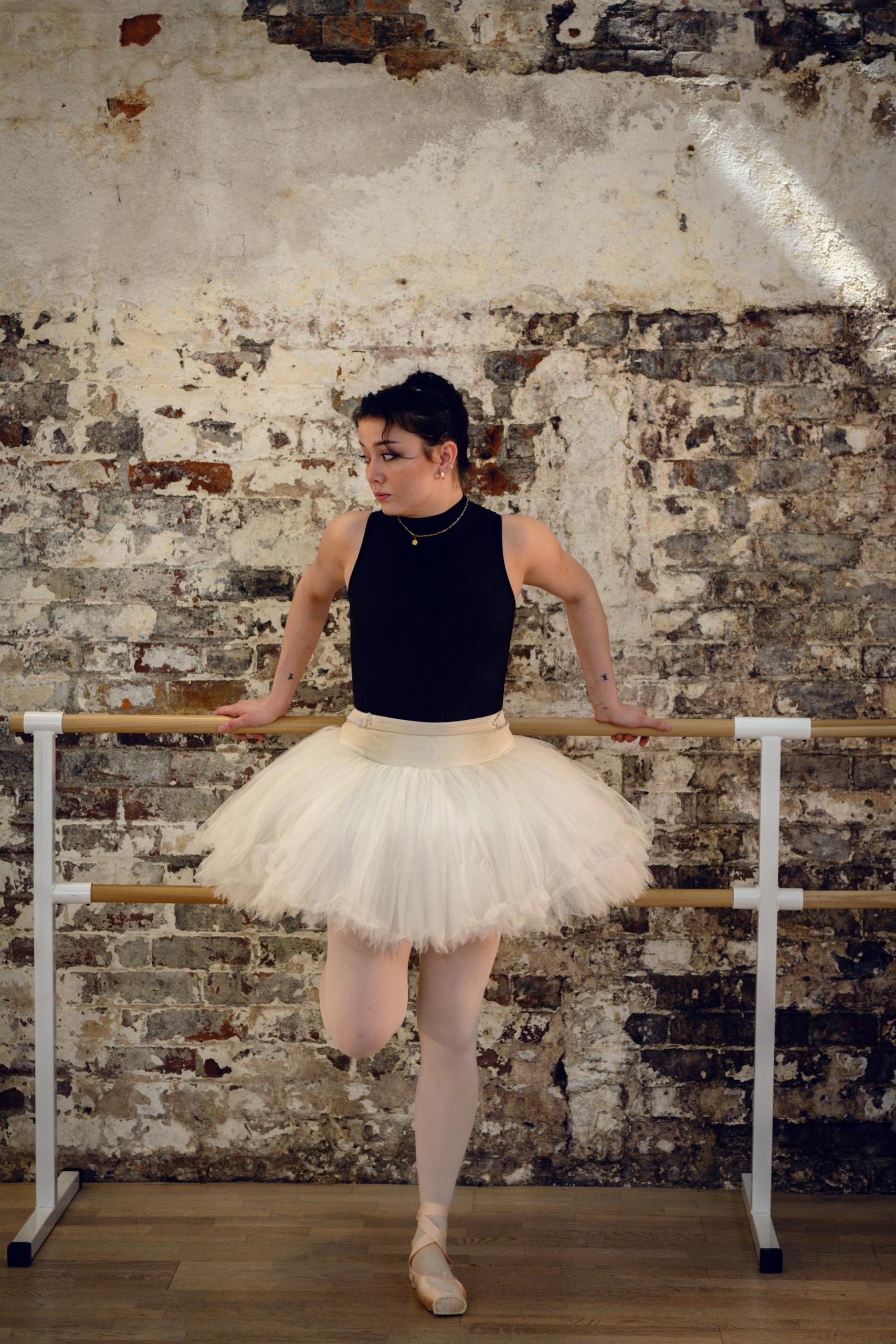
Confessions from ballet class: barre exercises - the eternal pliés and jambés, still haunt my dreams. I don't remember ever starting a ballet class with deep breaths, but I do remember the endless barre drills. I guess we could count the generous arm movements (Reach! Reach!) as a breathing suggestion. But there was never a 'breathe in, breathe out' command.
Perhaps our dance teacher assumed we would breathe correctly on our own. Or, she thought it such an elemental activity that it didn't bear any mention.
Whatever the reason, neglecting to do breathing warm-ups before approaching the barre left us dance students at a disadvantage.
Breathing is one of the best warm-up exercises for dancing, because it improves oxygen delivery throughout your body. These exercises give your lungs a workout, and conditions them for the session ahead. Another round of breathing after warming up helps clear your mind and channel your energy.
Finally, breathing exercises help you control and maintain your focus. At the start of your warm-up, it signals that you're changing gears from regular life to dance mode. Finishing with breathing exercises allows you to bask in the warmth of your physical self.
In both cases, these exercises do wonders for your mental health, as well as your body. In this clip, the instructor teaches us points dancers must consider when doing breathing exercises.
Star Jumps
Some fitness enthusiasts approach their dance workouts with verve and energy. They can't wait to get hopping so, for them, this exercise is the perfect follow-up to breathing. Of course, you don't have to jump right into star jumps; you can start with any of these exercises. So long as you do them all.
In school, students groan when they have to do this exercise. It feels rather silly to mimic a jumping jack - a toy figure, with arms and legs flailing about. We'd argue this exercise is underrated, for all the benefits it brings.
Star Jumps, also called jumping jacks, require coordination, balance, and a great deal of stamina. Dance also demands these qualities. That makes these jumps the best warm-up exercises for dancing.
Our table sets the bar rather low for star jumps, just two reps of 20 each. Should you decide to begin with this exercise, start with one set, and do the other towards the end of your warm-up. As it's the most energetic of your dance warm-up moves, it's best to spread them out.
Neck Rolls
Many workout devotees like to get fit from the top down, meaning they start with neck exercises and progress downwards. If that's you, begin with neck rolls. Stand with your feet shoulder-width apart, and your arms relaxed at your sides. Drop your chin to your breastbone, and then tilt your head to the right to begin the circuit.
Imagine a laser shooting out of the top of your head. Its beam must describe as perfect an oval as possible. Have it travel over your right shoulder, across the nape of your neck, over your left shoulder and back to its original position.
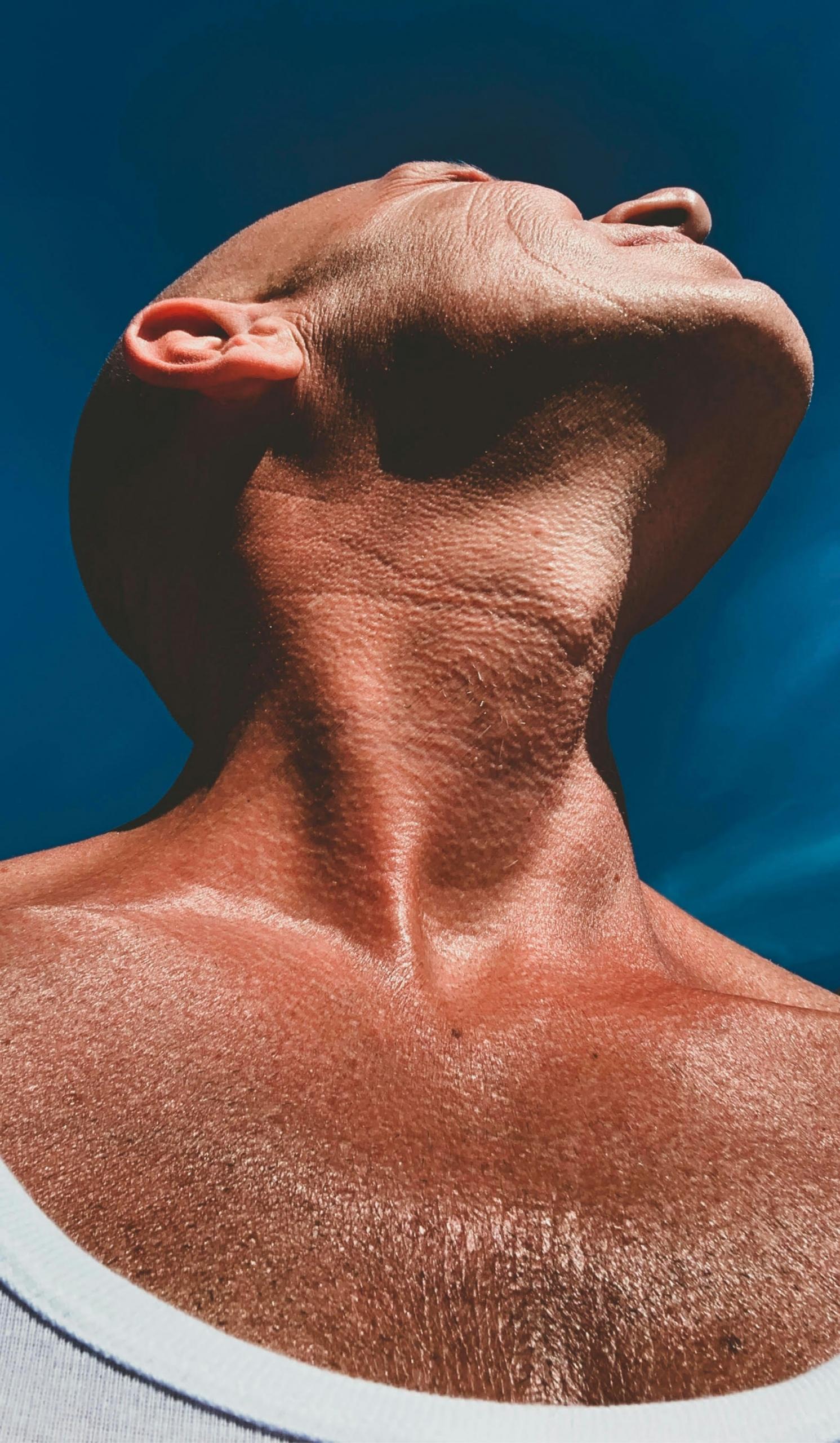
Once again, you have 2 x 10 reps, but you don't have to go by that formula. You might do five travelling left, another five to the right, and reserve the last 10 (2 x 5) for later in your warm-up.
Keeping your cervical spine loose and flexible is one good thing neck rolls do for you. They can also help pinpoint harmful health conditions, such as ear infections, ear fluid imbalance, or if your jaw joints are misaligned.

Shoulder Rolls
All the sitting we do does our body no end of harm. From school students to office workers, and anyone slouching on the sofa, everyone suffers from back muscle tension. Stabbing pains in the trapezius muscles (traps) is one of the most telling signs of such.

Neck and shoulder rolls are instinctive moves to release that muscle stress. If you've ever rolled your shoulders after a long session at the keyboard, you know how good this exercise feels. Not only is it a great way to release tension in your traps, but it's one of the best warm-up exercises for dancing.
However, you must do it correctly for it to be effective. Standing with feet shoulder-width apart, pull your shoulders as far forward as possible and then, slowly drive them, up, back, and down. When doing so, keep your traps as loose as possible, and leave your arms hanging by your sides.
For this exercise, it's best to not break up the reps. Do all 10 forward at once, and then, all 10 backward. For the backward rolls, you only need to reverse the forward rolls' movements.
Ideally, you should carry your breathing exercise through these reps, inhaling through one roll and exhaling through the next. Ballet dancers use this power combination to build posture, strength, and flexibility.
Hip Swings
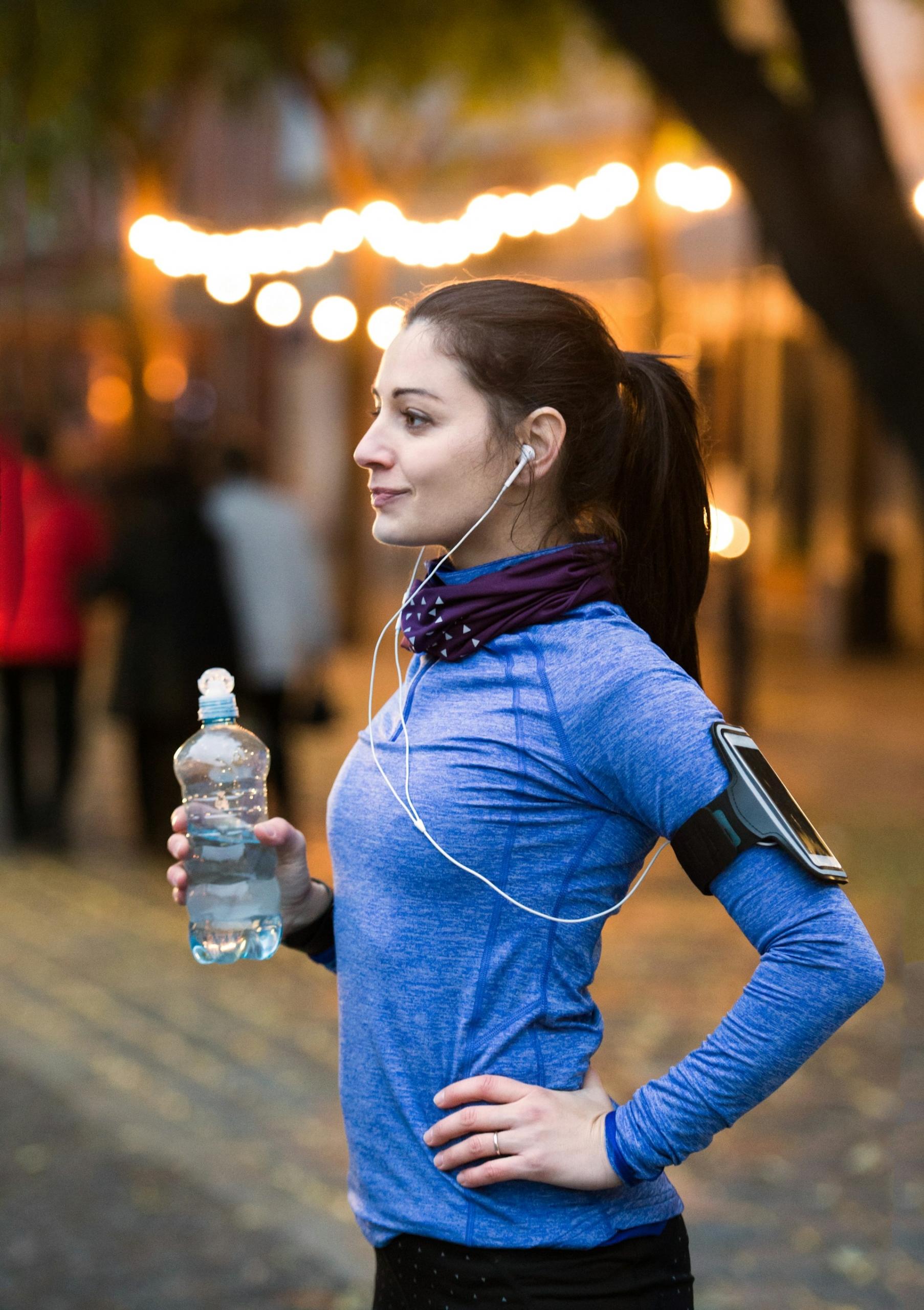
Now that we're halfway through our list of dance warm-ups, you might have noticed the word 'stretch' doesn't feature. Indeed, we don't want to stretch anything as we warm up. We want to condition our joints and muscles for the work ahead.
Now that we've released upper body tension, it's time to focus on the lower body, starting with the hips. Proper hip swings entail standing with your feet shoulder-width apart, with your hands on your hips.
In this position, thrust your hips to the right, then push them forward and around, until they push to the left.
The motion should describe a half-circle - not a linear swing, from side to side. Complete the circle by 'swinging' your hips back to the right, making the arc towards your back, this time. As with your shoulder rolls, it's best to do these reps all at once; first clockwise, and then counter-clockwise.
Leg Swings
With your hips now lubricated, put them to work! Grab sometime to hold onto for balance; I use my walking poles but a chair back works well, too. With your safety assured, plant one foot while swinging the other leg front to back, to front again. Repeat 10 times for each leg; no need to break these reps up, either.
This move aims to turn your leg into a pendulum, not to kick as high as possible in either direction. You'll find that the closer you get to your tenth swing, the higher your leg will travel. This greater range of motion is visual proof that your warming-up process is effective. That, in turn, demonstrates improvements to your conditioning and wellbeing.
Heel Raises

As long as you've got that chair (your poles, or a wall) handy, warm up your calves and hamstrings.
With your feet slightly apart and your hands resting on your balance support, raise your heels as high as possible. Hold your tiptoe position for a beat, and then release. Repeat 10 times.
This exercise works best when you create tension. Raising your heels slowly gives your muscles and tendons the chance to work incrementally. This slow work warms these body parts better than a quick yank, up and down.
All the dance workout resources that we consulted urge the same. So, don't be surprised that you haven't broken a sweat as you warm up. You weren't meant to!
Lunges
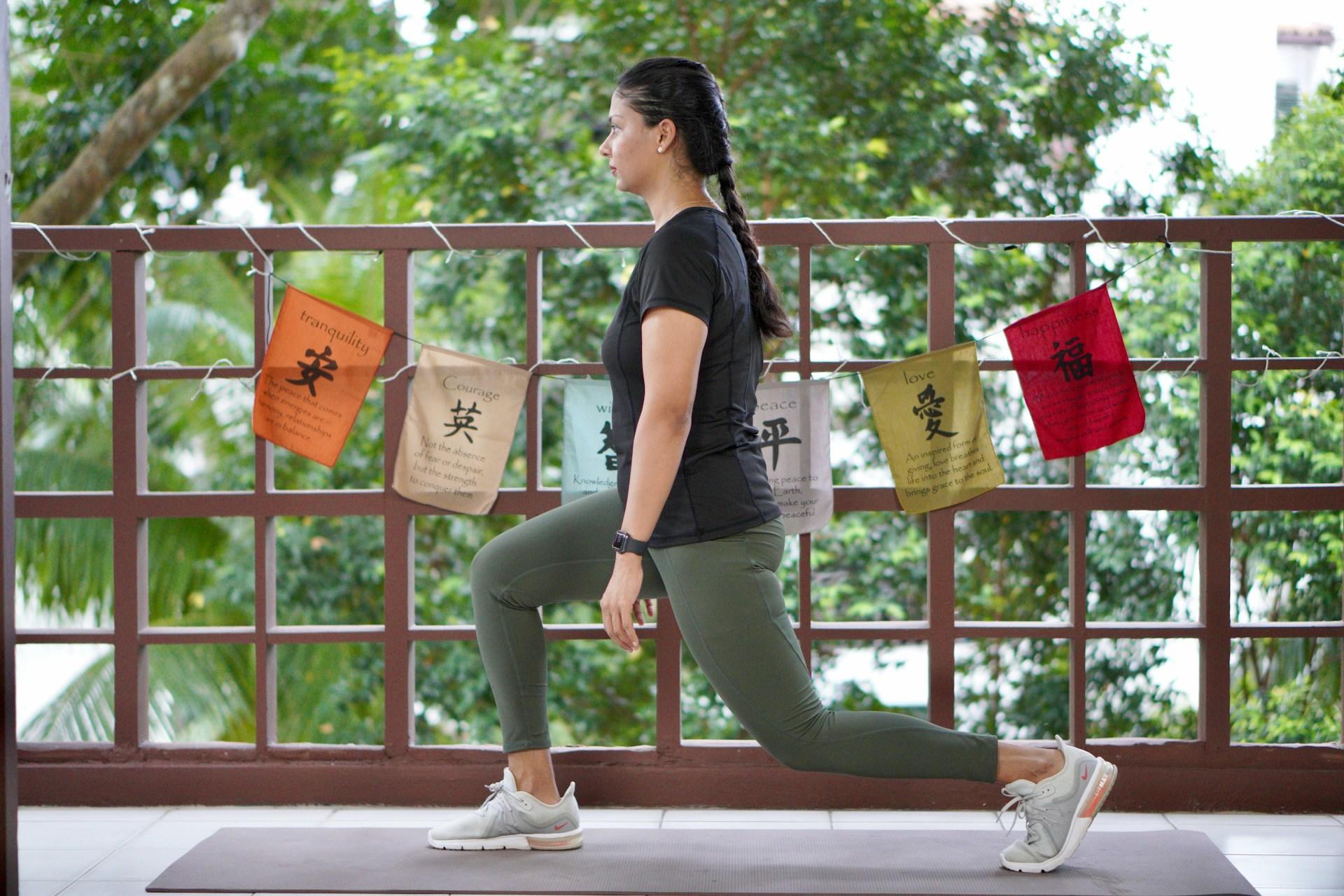
With your lower body parts warmed up, you're now ready for a more dynamic movement. Done slow or fast, lunges fall into that category. However, you must execute them properly, both for proper conditioning, and to avoid injury.
- stand upright, feet shoulder-width apart and upper body relaxed
- plant one foot and slide the other backwards, keeping the back leg straight
- make sure the planted foot's knee remains above the heel, not pushed forward
- with each successive lunge, drive your body lower, for maximum effect.
Those four points describe the basic lunge. However, variations exist, as this contrast demonstrates.
Version 1
- hands by your sides (for balance)
- same leg 10x
- slow lunges to work the lower body
Version 2
- hands on your hips (for upper-body posture)
- alternating legs
- fast lunges to get the heart rate up
Our opening quote suggested that one must be an artist to dance properly. That's not always the case. Some people dance for weight loss, and/or to achieve their fitness goals. These best warm-up exercises for dancing prepare you for both artistry and fitness.

